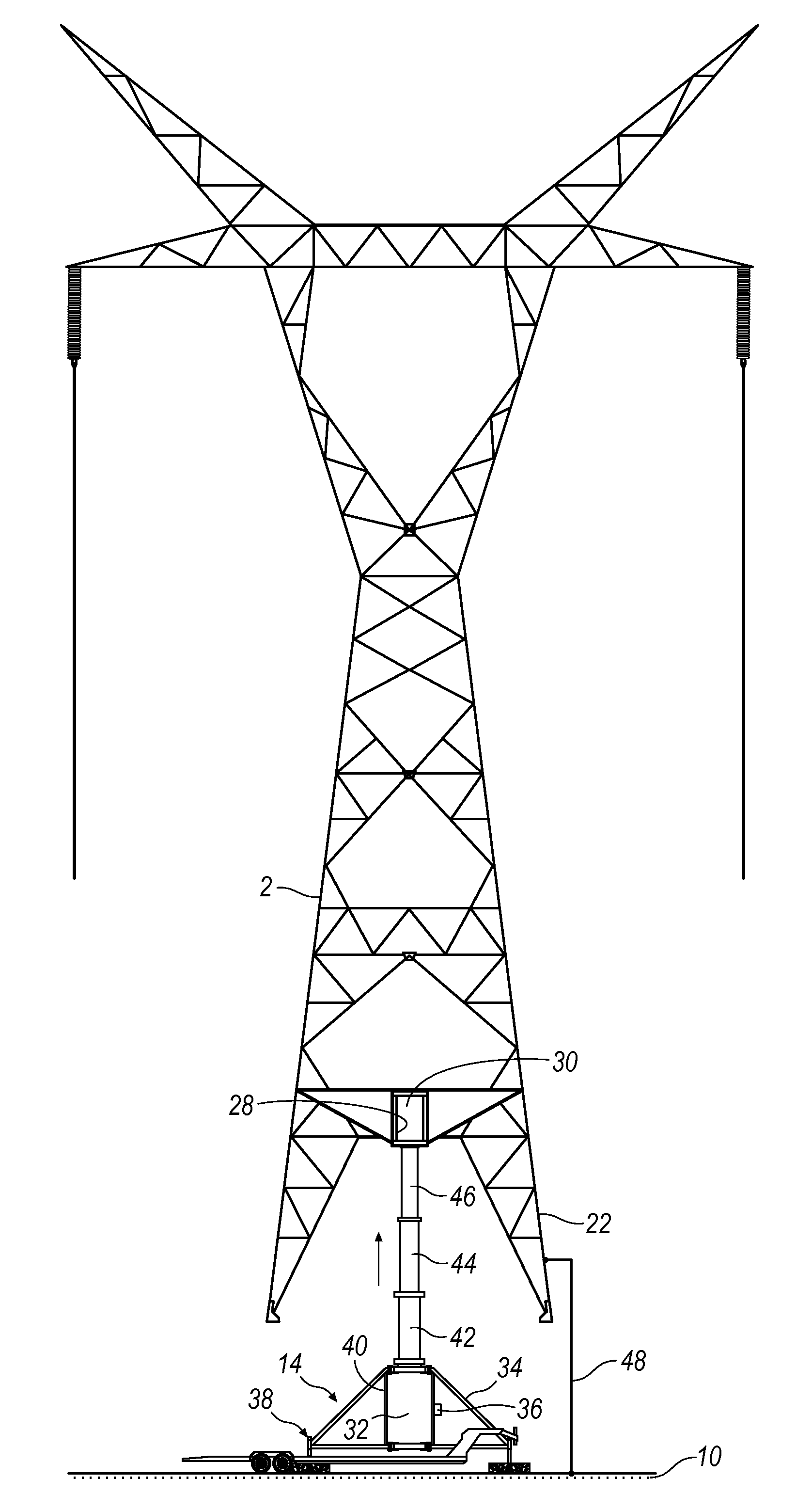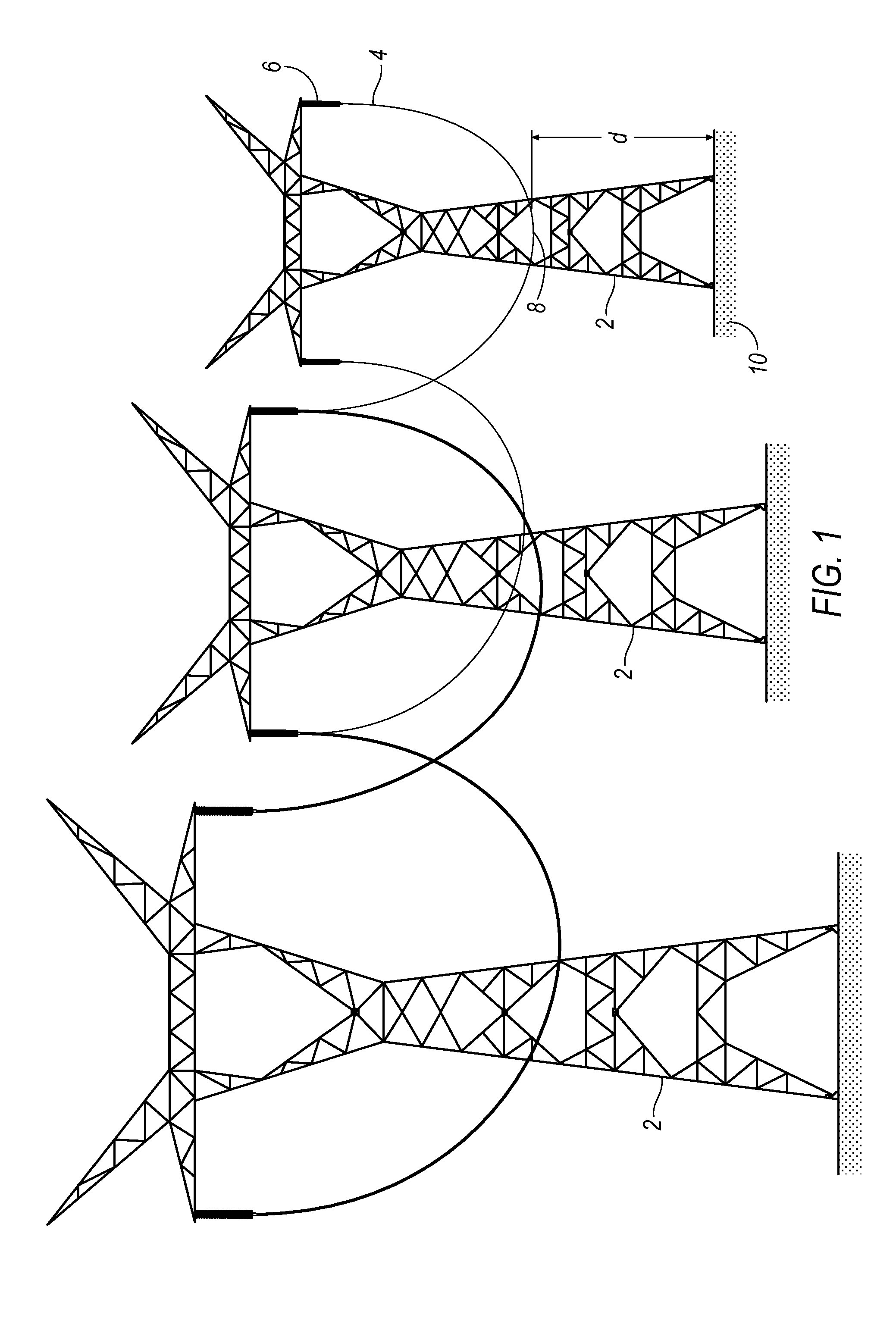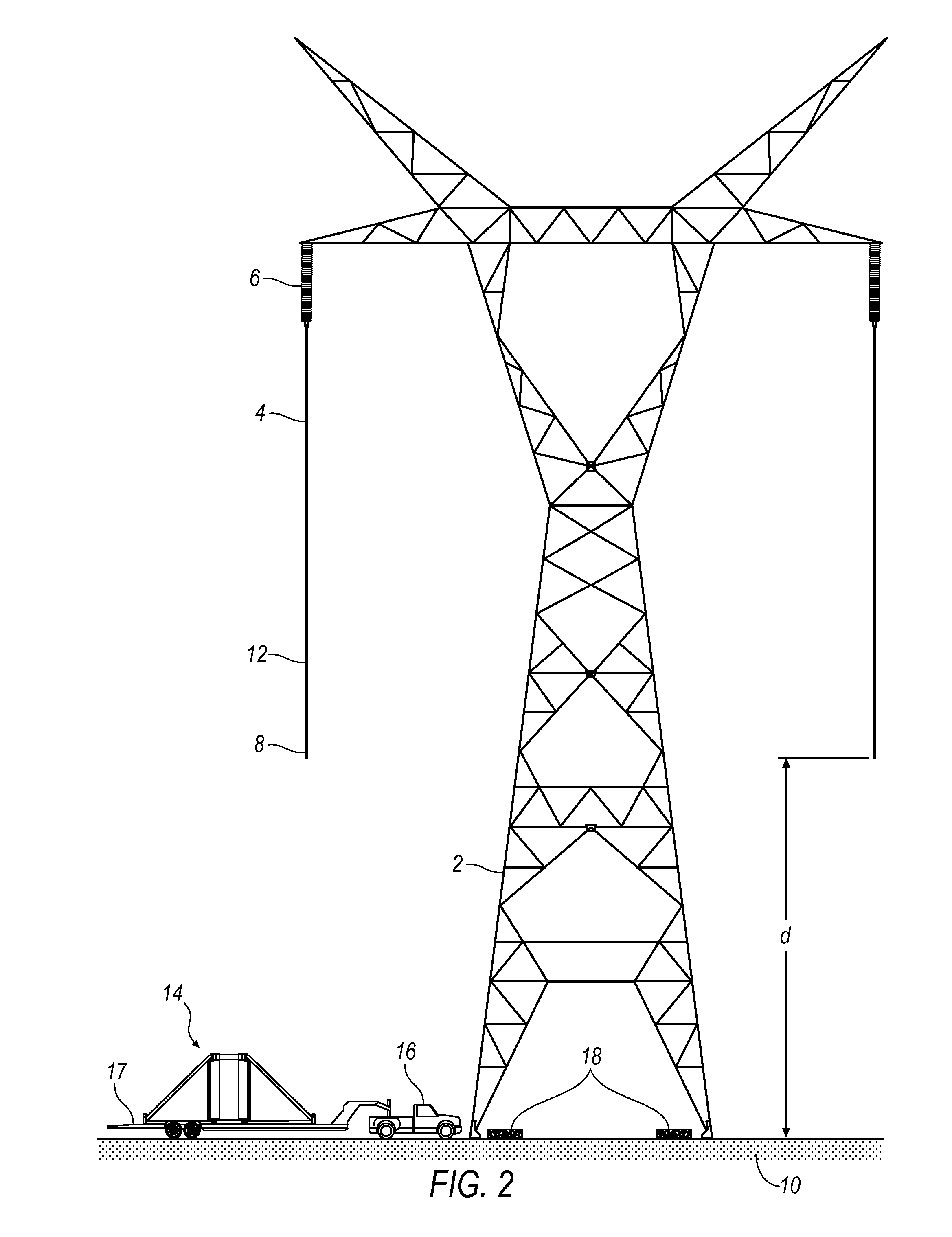Tower lifting stand system
a technology for lifting stands and towers, applied in the direction of towers, buildings, constructions, etc., can solve the problems of unattended and without much maintenance, increased clearance, and stress on transmission lines, so as to increase the voltage, avoid the effect of high maintenance costs and increase the exposur
- Summary
- Abstract
- Description
- Claims
- Application Information
AI Technical Summary
Benefits of technology
Problems solved by technology
Method used
Image
Examples
Embodiment Construction
[0036]FIG. 1 illustrates typical transmission lines that one might find in the power grid that is used in our country. High voltage transmission towers 2 traverse our countryside and are connected by transmission lines 4. Insulators 6 suspend the lines 4 from the towers 2. Over time, the distance d between the lowermost point 8 of the power line 4 and the ground 10 will change. FIG. 1 illustrates transmission lines 4 that have aged and are in need of repair.
[0037]FIG. 2 illustrates an apparatus and method that can be used to maintain a tower 2 that has transmission lines 4 that have sagged to an unacceptable lower point 8. To address this problem, a novel portable lifting stand system 14 has been delivered to a job site. A vehicle 16 pulls a trailer 17 in place where it can be staged for a maintenance project. The system 14 is transported on the trailer 17. Of course, system 14 could be incorporated into vehicle 16 so the illustrative approach is merely exemplary. The tower is shown...
PUM
 Login to View More
Login to View More Abstract
Description
Claims
Application Information
 Login to View More
Login to View More - R&D
- Intellectual Property
- Life Sciences
- Materials
- Tech Scout
- Unparalleled Data Quality
- Higher Quality Content
- 60% Fewer Hallucinations
Browse by: Latest US Patents, China's latest patents, Technical Efficacy Thesaurus, Application Domain, Technology Topic, Popular Technical Reports.
© 2025 PatSnap. All rights reserved.Legal|Privacy policy|Modern Slavery Act Transparency Statement|Sitemap|About US| Contact US: help@patsnap.com



